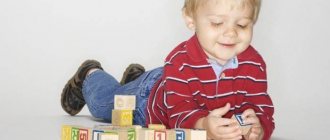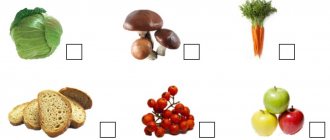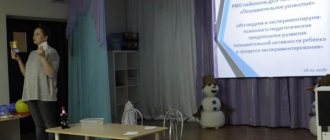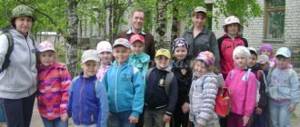What is graphomotor
First you need to understand the very concept of graphomotor. This is not only the development of familiar hand motor skills. The tasks of graphomotor skills include:
- holding a pen and pencil correctly;
- accuracy in tracing lines;
- rhythmicity of movements;
- correct pen pressure when writing;
- visual perception of a given material;
- attention, the ability not to be distracted by foreign objects and actions;
- motor skills.
It is important! Do not confuse drawing with graphomotor skills. These concepts are not closely related to each other. Drawing involves a flight of thought; a child can depict what he wants on a piece of paper. With graphomotor skills things are different. There are specific graphomotor exercises that ask you to perform precise tasks (circle a line, shade, write letters without lifting your hand from a piece of paper).
so UNT / Fine arts / Lesson plans for fine arts 2nd grade
Lesson 28 Topic: GRAPHIC EXERCISES. LINE AS A MEANS OF EXPRESSION. RHYTHM OF LINES
15.11.2013 19909 0
Type of occupation:
graphic image of a spring forest landscape.
Goals and objectives:
developing the ability to feel and determine the beauty of lines as a means of artistic expression,
use its capabilities in your own creativity; consolidating the ability to convey your observations in a drawing; teach composition techniques; developing skills in using a ruler; strengthening interdisciplinary connections (mathematics).
Lesson equipment: pencils, felt-tip pens, pastels, wax or colored crayons (works depicting spring land are used as underpainting; you can work in gouache on a blank sheet, but create a linear image, not a pictorial one), charcoal, tinted paper (you can use black paper, under white chalk, pastel).
Literary series: M. Prishvin “Forest Stream”, riddles, poems on the topic.
Musical series: A. Arensky “Forest Stream”, “Prelude”; E. Grieg “In Spring”.
During the classes
I. _
Class organization.
Checking absences and readiness for class.
II .
Conversation about drawing media.
You can learn about how beautiful and diverse the world is from poems and stories, listening to music and looking at the paintings of artists. But the poet, musician and artist glorify the world and nature each in their own way. Painters, for example, paint with paints,
masterful use of color.
Graphs convey their impressions of the world, often using black and white colors on paper.
The word "graphics"
derived from the Greek “grapho” (“I draw”, “I write”, “I draw”). Line, stroke and tone have become the main visual and expressive means of graphics.
The drawing is formed by lines, strokes and loops.
Hatch
- this is a short trace of a pen or pencil; it acquires meaning along with other strokes, creating
a tone, a spot.
A line
is
a longer trace. This is one of the most important and most expressive elements of the drawing. The line can either thicken or thin, or strengthen or weaken until it disappears completely.
Skillfully using these means, the artist creates a graphic image.
Due to the availability of material and visual media, speed of execution, and clarity of visual language, graphic works became widespread (especially from the 14th century, in Europe with the invention of printing, and in the East even earlier).
The variety of material, technical and visual means and techniques made it possible to use graphics for various purposes, as a result of which separate types and genres emerged in graphics:
— easel (independent value, on separate sheets);
- book;
- poster;
— industrial (in trade, postcards, prospectuses, booklets, etc.);
— newspaper and magazine;
— educational and design (serves the educational process: maps, graphs, visual aids, visual propaganda).
On the use of visual media
drawings can be linear, black and white, tonal (tonal, silhouette).
Silhouette -
The simplest type of tone pattern is a contour pattern filled with one even tone.
The darkest thing for an artist is a pencil, the lightest is paper. He takes the darkest part of the subject to the full force of his pencil, leaving the lightest part on the paper. He places all other tonal gradations between these extremes.
III .
Graphic exercises.
Steps to complete the exercises: 1) Place the sheet horizontally (Fig. 1):
a) divide it in half with a line from top to bottom;
| 1 | 5 | 9 | 13 |
| 2 | 6 | 10 | |
| 3 | 7 | 11 | |
| 4 | 8 | 12 |
b) once again divide the resulting rectangles in half with vertical lines.
2) In rectangle 1 (see Fig. 2 on p. 121)
We apply shading in the form of a grid with lines going in the opposite direction, forming a small rectangular cell. We fill the entire square (we bring the lines to the sides of the rectangle). The distance between the lines is the same.
3) In rectangle 2 (Fig. 3)
draw wavy lines (the waves and the distance between them are the same).
4) In rectangle 3 (Fig. 4)
zigzag lines.
5) In rectangle 4 (Fig. 5)
draw slanted lines or dots.
6) In rectangle 5 (Fig. 6)
draw lines in a circle from the center and concentric circles.
7) In rectangle 6 (Fig. 7)
draw spirals. In rectangle 7
In rectangle 7
(Fig.
we draw the lines at first thick, in full force, and at the end - barely visible.
9) In rectangle 8 (Fig. 9)
draw a snowflake or many snowflakes.
Rice. 9
We filled the left two lanes.
Now we move on to the third lane (on the left, and the second on the right). Here we work either in black and white gouache, watercolor or graphic materials (pencil, charcoal, felt-tip pen, etc.).
10) We paint rectangle 9 with black paint.
11) Rectangle 12 is either left white or painted over with white.
12) Paint rectangle 10 with a mixture of white and black (1:2 ratio).
13) Paint rectangle 11 with a mixture of black and white (ratio 1:2).
The result will be a stretch from black to white, through gray.
14) In rectangle 13 (Fig. 10)
Let's come up with some kind of plot drawing: mountains, forest, streams, rivers, grass, hedgehog, bunny, etc.
- Guys, what can you draw with lines from our rectangles 1-8?
IV .
Working on a task.
On tinted paper or underpainting we depict a spring forest landscape using graphic exercises.
The drawing must include spring streams, meandering like snakes, thoughtful and quiet, running in a race. The task is devoted to the rhythmic organization of a place using lines. Rhythm of lines -
the most important means of compositional expressiveness.
V. _
Lesson summary.
Express exhibition, analysis of completed work.
Homework:
think about where linear rhythms occur in life and nature; bring reproductions of graphic works, books about trees.
Features of motor development and graphic skills
Educators and teachers often note that children are intellectually developed, but at the same time their graphic skills leave much to be desired. How to help the baby? First of all, develop and improve graphic skills, which include:
- Small muscles of the fingers. Exercises are needed that would develop the motor abilities of the fingers, increase their strength and endurance.
- Visual analysis. The baby must navigate in space, distinguish between the concepts of “right”, “left”, “up”, “down”.
- Graphic drawing. As a rule, the task is completed in special copybooks. Children are encouraged to trace along the contour, hatch, complete the drawing, and supplement the drawing with graphic elements.
- Graphic symbols. Knowledge of basic geometric shapes is required.
It is important! If the formation of graphomotor skills begins in children from birth, then, as a rule, they successfully study at school. Basic subjects (writing, mathematics and numeracy, reading) do not pose any particular difficulties for them.
Children 5-6 years old
This age is the finish line before schooling, so educators and parents need to teach the child as deeply as possible the skills that will accompany him every day at school. We are talking about graphic skills.
The purpose of conducting graphic exercises with students in the preparatory group is to familiarize them with notebooks, preferably in large squares and:
- teach how to navigate by cells (for example, upper right/left corner, etc.);
- teach how to draw curves and wavy lines;
- develop the skills and abilities to trace the contour of the cells, draw straight lines as possible in the following directions: for example, from top to bottom and from right to left;
- teach how to connect the corners of the cells diagonally;
- carry out so-called graphic dictations (go up one cell, then to the right, go down five cells, etc.).
Various types of these activities, when used purposefully, contribute to:
- proper development of graphic skills in preschool children;
- accelerated development of fine motor skills (especially the writing hand);
- improving the coordination of movements of children's fingers;
- development of thought processes;
- development of spatial orientation, thinking, etc.
If a child is being raised in a preschool institution, then parents do not have to worry about preparing for school, because the schedule of hours allocated for classes includes time for preparing for writing. Such classes are conducted by a teacher. But if a child does not attend kindergarten, then parents must independently study with him, otherwise in the first days of school there will be problems with writing, and, accordingly, a lag in mastering the material. This is not difficult, because sensory skills are developed through drawing, appliqué, design, cutting - children engage in this type of activity with pleasure.
Stages of development of children's graphic skills
How to properly develop graphic skills in children? Of course, you should not immediately offer your child a pen and pencils so that he can trace lines and draw segments. Coordination and motor skills can help develop graphomotor skills for babies.
Here are the skills a child from 1 to 2 years old should have:
- be able to hold several objects in one hand. This skill is developed by offering rattles to the baby;
- hold a pencil (even incorrectly, just in a clenched fist), be able to “scribble” with it;
- It’s good to turn the pages of a book (one at a time);
- build a high tower from large cubes or construction elements;
- fold the pyramid correctly.
It is important! All exercises with the child should be done in a playful way. If something doesn’t work out for the baby, there is no need to scold him or raise his voice. Classes should last no more than 10-15 minutes.
Skills and abilities of a child from 2 to 3 years old:
- The toddler can independently pull out the drawer and take out its contents;
- folds paper, makes simple origami (airplane, flashlight, Christmas tree);
- is engaged in modeling from plasticine;
- holds a pencil correctly. If the baby does not know how to do this, special rubber pads are sold that repeat the anatomy of the fingers;
- strings large beads.
Skills for children aged 3 to 4 years:
- the baby can freely draw with crayons, paints, felt-tip pens;
- knows how to tie knots;
- makes the bed;
- tries to hatch and outline the figures.
Skills for children from 4 to 6 years old:
- the child independently zips the jacket;
- can tie shoelaces;
- makes crafts;
- colors well (without going beyond the printed drawing);
- can trace a drawing on paper (clearly along the suggested dotted lines).
Recommendation! At 6-7 years old, children already go to school. Graphomotor skills should be well developed by this period. Unfortunately, the school curriculum does not provide additional hours for training and improving these skills. This is why parents need to work with their baby on their own. At the age of 5-6 years, invite the child to complete tasks in special recipes, take them to clubs (modeling, drawing, lessons on musical instruments).
Formation of graphic skills in preschool children
Bibliographic description:
Kholodnyak, L. V. Formation of graphic skills in preschool children / L. V. Kholodnyak. — Text: direct // Innovative pedagogical technologies: materials of the VI International. scientific conf. (Kazan, May 2020). — Kazan: Buk, 2020. — pp. 56-58. — URL: https://moluch.ru/conf/ped/archive/214/12297/ (date of access: 10.10.2020).
The article discusses the problems of implementing pedagogical conditions for the formation of a healthy lifestyle for preschool children, reveals the principles and phasing of the activities of a teacher-educator in a preschool educational organization.
Key words: development, formation, preschool educational institution, graphic skill, preschool child
Formulation of the problem. Modern preschool education is based on the principle of the unity of the educational space of the Russian Federation. It is implemented in the tasks of ensuring equal opportunities for the full development of each child during preschool childhood and creating conditions for the continuity of the content of education, implemented within the framework of educational programs at various levels. At the same time, the Federal State Educational Standard for Preschool Education does not regulate the forms and methods of ensuring continuity between the preschool level of education and primary school, and also does not define specific requirements for preparing children for school education in a preschool educational organization.
From birth, a child is an explorer of his environment, relationships with people around him - this is his (the child’s) main activity, during which the development and formation of personality occurs. Where he acquires initial knowledge about the life around him, a certain attitude towards people and work begins to form, skills and habits of correct behavior are developed, and character is formed. And we (adults) consider the child’s actions (research, copying the behavior of adults, etc.) to be play as the most important type of activity.
Of course, the game is an effective means of shaping the personality of a preschooler, his moral and volitional qualities; the need to influence the world is realized in the game. It causes a significant change in his psyche. The most famous teacher in our country, A. S. Makarenko, described the role of children's games as: “Game is important in the life of a child, it has the same importance as the activity of work and service for an adult. What a child is like at play, so in many ways he will be at work. Therefore, the education of a future figure occurs, first of all, in the game.” [98] Different forms of organizing activities are also associated with their different motivations.
Activity, as the most important characteristic of a person’s mental reflection, is laid down and realized in objective activity and then becomes a person’s mental quality. Formed in activity, consciousness manifests itself in it. Based on the answer (complete or incomplete) and completion of the task, the teacher or educator makes a conclusion about the child’s level of knowledge. Analyzing the student’s educational activities, the teacher draws conclusions about his abilities, the characteristics of thinking and memory. Deeds and actions determine the nature of the relationship, feelings, volitional and other personality traits. In this case, the amplitude of movements of the hand will gradually decrease [2, p. 9]. To develop fine motor skills of the hands, the following techniques and exercises are used:
‒ hand massage is actively used, which will soothe tense muscles;
‒ it is recommended to use finger gymnastics and finger games; dramatization of any rhymed stories or fairy tales using fingers takes place in a playful form;
- modeling from salt dough, plasticine and other plastic material;
- performing movements with small objects, such as mosaics, construction sets, stringing beads, tying ropes, fastening buttons, cutting with scissors;
‒ to develop fine motor skills of the hands, you can perform movements to tighten the nuts in the construction set;
‒ do not forget about special exercises to prepare your hand for writing.
You can talk about insufficient finger work by watching how a child draws and paints. If at the same time he constantly turns the sheet without changing the direction of the lines with the help of subtle movements of the fingers and hand, then systematic and regular training of the fingers and hands is necessary. The degree of difficulty, content and duration of graphic exercises must be correlated with the age and individual characteristics of the child. It is better to start with simple tasks and gradually increase complexity, after which you should do exercises to relieve tension and fatigue (wrist, shoulder and back).
In order for a child to have a desire to engage in graphic exercises, he needs to experience pleasure from the result of his actions. We can say that successful mastery of graphic drawing skills facilitates the acquisition of writing at school, since both graphic activities have similar characteristics.
The development of precise small movements of the hands and fingers and the development of coordinated eye movements are important in the program, therefore each lesson is accompanied by finger gymnastics and physical education [1]. The skill of regulating the force of pressure on a pencil continues to be practiced and improved, and in this regard, the ability to subordinate the movement of the hand to certain proportions continues to be improved. Mastering this set of skills is impossible without good command of hand movements and requires the child to develop processes such as analysis and synthesis, comparison, and specification.
These difficulties are caused by weakness of fine motor skills of the fingers and insufficient development of skills of visual-motor coordination, voluntary attention, analytical perception, and visual memory. Otherwise, the lag in writing and drawing can be significant, so adult control over the child is a condition for preventing the incorrect formation of a motor stereotype. Starting work, it is recommended to select a tool; soft colored pencils are best suited, which will later be replaced with a simple soft pencil [2] . The child must learn, follow the right direction, reproduce circles, straight vertical, horizontal, semicircular and cyclically repeating lines with curves, without lifting his hand, get an idea of the working line and the cell.
Older preschoolers can be offered: drawing by dots, finishing an unfinished drawing, drawing by cells and copying drawings by cells. In addition to the formation of graphic skills, these tasks are very useful for the development of visual analysis, voluntary activity, and the ability to accept a task. Various tasks related to shading play a major role in the development of graphic skills.
Hatching is performed under the guidance of a teacher. He shows how it is performed, controls the parallelism of the lines, their directions, the child’s posture and how he holds the pencil. The rules of shading must be followed: do not go beyond the contours of the figure, maintain parallelism of the lines and the distance between them should not exceed 0.3–0.5 cm. After the children have learned to draw the contours of the figures, they begin shading them [4].
The main task of the teacher is not to teach writing, but to prepare the hand for writing, and for this it is necessary to create conditions for the child to accumulate motor and practical experience and manual skill. According to T. S. Komarova, manual skill is a specific sensorimotor ability that needs to be developed in preschool age [3]. In the structure of manual skills, they distinguish: first, drawing technique, as well as methods of correctly holding a pencil, brush and mastering rational techniques for using them, mastering the technique of line, stroke, spot;
‒ hand movements when drawing, aimed at conveying the shape of an object;
‒ regularity of movements, continuity, maintaining the direction of movements in a straight line, arc, circle, the ability to change the direction of movement at an angle, transition from one movement to another, the ability to correlate hand movements along the length of images of segments or their parts in size [2]
Integral components of the activity are a variety of skills and abilities. There are many opinions of scientists on this topic, some researchers believe that skills precede skills, others believe that skills arise before skills. The reason for these discrepancies is the versatility of the word skill. Skill is the elementary level of performing actions, and a person’s mastery in a certain type of activity. It is necessary to understand that elementary skills that follow knowledge and the first experience of action, and skills that express one or another degree of mastery in performing activities that arise after the development of skills.
Elementary skills are actions that arise on the basis of knowledge as a result of imitation of actions or independent trial and error in handling a subject. Skill arises as a result of developed skills and a wide range of knowledge [1]. The activity will be performed efficiently if the person has mastered the skills. What is it, a skill is a strengthened way of performing actions. The development of a skill in a person is based on detailed conscious actions and movements that turn into skills.
The basis of any skill is the development and strengthening of conditioned reflex connections. Repetition of the nervous path and its consolidation as a result of constant repetition of actions lead to the precise localization of excitation processes in certain nervous structures. In work, successful solution of assigned tasks is possible by mastering a certain set of skills: motor, mental, sensory and behavioral skills.
Motor skills can be observed in a variety of activities; without the work of motor skills, it is impossible to influence the object of influence, it is impossible to teach the technical processes of writing, oral and written speech, and movement in space [4]. In the pre-school group, children learn to make a variety of crafts using paper or cardboard in combination with other materials.
The state of preschoolers' graphic skills is an indicator of psychological maturity, and this is a necessary readiness for the development of motor maturity. Since motor maturity bears the imprint of the entire complex of influences of hereditary and environmental factors, its manifestation undoubtedly affects motor memory and motor imagination, thinking and perception [3].
Conclusion. Thus, we define preschool maturity as the holistic mental state of a preschool child, characterized by a high degree of development of those qualities and processes that flourish precisely in the preschool period of childhood and for which this period is favorable [4].
Literature:
- Federal State Educational Standard for Preschool Education (approved by order of the Ministry of Education and Science of the Russian Federation dated October 17, 2013 No. 1155, registered with the Ministry of Justice of Russia on November 14, 2013 No. 30384).
- From birth to school. Approximate general educational program for preschool education / Ed. N. E. Veraksy, T. S. Komarova, M. A. Vasilyeva. — M.: MOSAIKA$SYNTHESIS, 2014. — 334 p.
- Gorbatova E. V. Preparing your hand for writing: graphic games and exercises for children of senior preschool age: a manual for teachers of institutions providing preschool education / V. V. Gorbatova. - Mozyr: LLC Publishing House "Bely Veter", 2005. - From 2–12.
- Filippova S. O. Preparing preschoolers for learning to write. Toolkit. - St. Petersburg: DETSTVO-PRESS, 1999. - 94 p.
Key terms
(automatically generated)
: preschool age, skill, child, ability, hand movement, development, manual skill, preschool educational organization, motor maturity, finger gymnastics.
How graphomotor skills help in child development
Graphomotor skills help develop the hand, prepare the hand for writing, develop thinking, teach you to see the shapes of objects and recognize their boundaries. Statistics show that children who are good at graphomania have a mathematical mind and a penchant for exact sciences.
Particular attention to graphomotor skills should be paid to children suffering from general speech underdevelopment (GSD) and with disabilities. In this case, children from an early age are offered to attend specialized institutions in which a special place is given to the development of motor skills.
Graphic exercises for developing fine motor skills
What should be the tasks for children to develop graphomotor skills? Experts offer the following options:
- Finger gymnastics. During classes, you can recite poems and compose fairy tales in which your fingers become the heroes.
- Various lacing. If there are no special accessories (a wooden board with a cord), ordinary thick threads will do.
- Palm massage using spiked balls.
- Finger paint.
- Sorting out cereals of different sizes and diameters.
- Working with scissors (applique, cutting).
- Various educational games (puzzles, construction sets, cubes, labyrinth).
- Working with plasticine.
- Classes in copybooks.
Graphomotor skills are of great importance for children's development. Thanks to the skills and abilities acquired in childhood, they will not encounter problems when writing at school and will correctly distinguish the boundaries of objects and their shapes.
Graphic motor skills also develop the frontal lobes of the brain, which has a beneficial effect on the intellectual abilities of children. Therefore, the task of parents is to monitor not only the development of gross and fine motor skills, but also to develop graphic skills in their child.
How to conduct classes
Teachers and parents should follow several rules that will help conduct educational activities with children as effectively as possible.
- Any exercises for the development of fine motor skills must be appropriate for the age of preschoolers. Many tasks for them resemble those that can be offered for the development of fine motor skills for children aged 2-3 years, but their content should be completely different, much more complex. At 6-7 years old it is useful (as at a younger age):
– color, but the drawings should already have very fine details;
– put together a mosaic, but from a large number of small elements;
– trace dotted images, but without “sliding” from the outline, without errors.
- Select materials, exercises, and games for developing motor skills that will be interesting to the child. Perhaps it is worth finding copybooks with his favorite fairy tale characters, dinosaurs or pirates. It is important to carry out any task not only as diligently as possible, but also with desire and a positive attitude.
- The pace of performing one type of exercise should increase gradually. First, the child must learn to confidently use a pencil or pen to complete tasks on paper, and then, as the skill improves, they can be done even temporarily.
- You should not teach your child to write capital letters before school. First, he must get used to holding a pencil correctly and repeating the outlines of simple lines and objects. The preschool period is a preparatory period; there is no need to rush into starting to master the 1st grade program ahead of time.
- Classes should be regular, but not too tiring. Before each session, it is useful to do special exercises for your fingers.
- It is important that the baby performs all tasks only with his dominant hand. You also need to monitor his posture, as well as good lighting while working.






